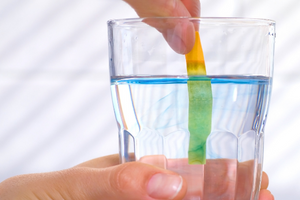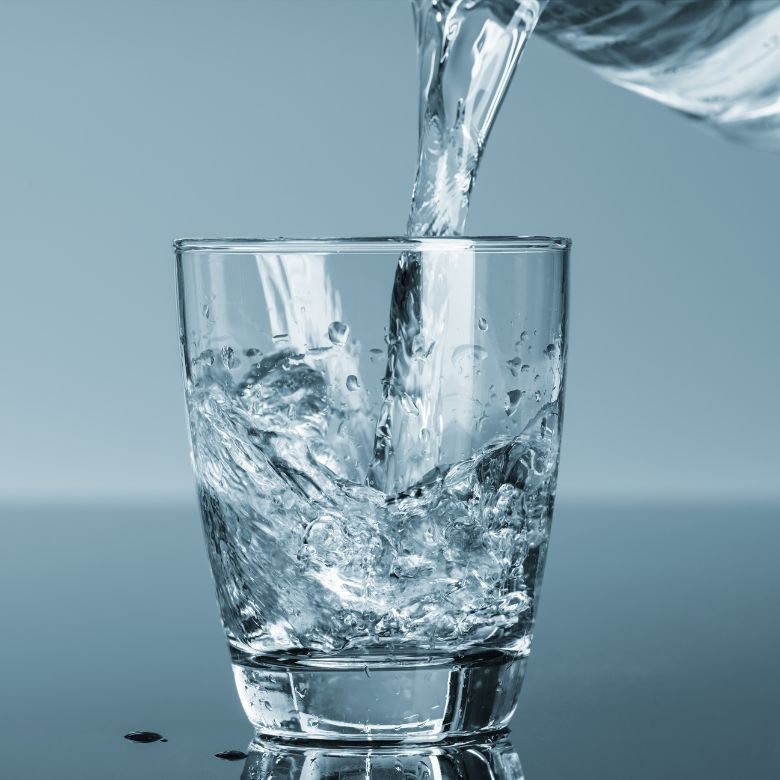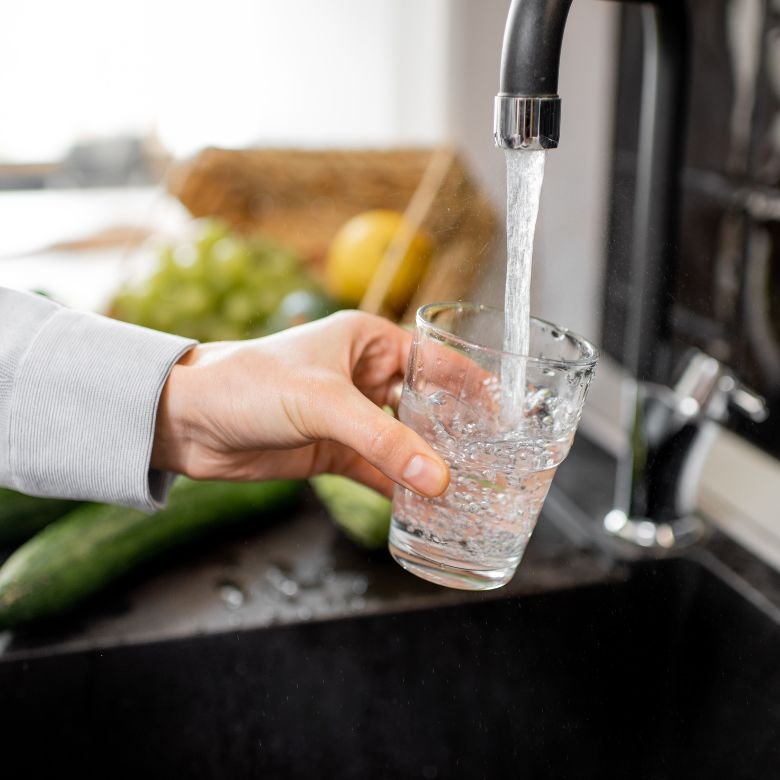People, animals and plants cannot live without water. It is undoubtedly the most important life-giving substance, an insufficiency of which causes weakness and diseases. The quality of the water we drink every day is influenced by many factors. One of them is acidity or the pH value. This article will answer the following question: what pH of drinking water is optimal and how does the acidity of the water affect the functioning of the human body?

What is water?
Let’s start with the most important question, and consider: what exactly is water? It is a colourless liquid and solvent, odourless and tasteless. Chemists describe water using a molecular formula H2O, which means that each of its molecules is made up of two hydrogen atoms and one oxygen atom. The boiling point of water is 99.97 °C. This ordinary liquid freezes at 0 °C and expands when exposed to low temperatures, which is a phenomenon among chemicals.
Different types of water can be classified according to:
- origin (groundwater, rainwater, seawater, etc.),
- salinity (fresh water, salt water),
- intended use (natural and utility waters),
- mineral content (low, medium, and highly mineralised waters).
Drinking water belongs to the category of utility water. It is fresh water, safe to drink without processing or after boiling, has no side effects and helps maintain the body’s well-being.
What is the pH of drinking water?
The term pH comes from the Latin words pondus hydrogenii and means the content of hydrogen ions in various substances. The higher the concentration of these ions, the greater the acidity of the solutions. The pH scale is a numerical scale and ranges from 0 to 14. Substances close to 0 are strong acids. Compounds with a high concentration of hydroxide ions, reaching the value of 14 on the pH scale, are called bases. Therefore, the pH of the drinking water indicates the acidity level of the liquid. It also brings valuable information about the quality of water and its utility for consumption.
What should the pH of the drinking water be?
Where to find information on the properties and pH of drinking water? Detailed guidelines on these aspects can be found, among others, in the Regulation of the Minister of Health of 7 December 2017 on the quality of water intended for human consumption. (However, this act concerns only drinking water, not natural spring and mineral waters).
The regulation clearly indicates that potable water should have a pH in the range of 6.5–9.5. The following are exceptions to this rule:
- still bottled water – its acidity can be 4.5,
- carbonated water – may have a pH lower than 4.5.
The measurements of the acidity of drinking water are now a standard. Liquid samples are taken from the water supply, water intake points and individual water intakes. If the health department detects a deviation in pH standards, the water undergoes a treatment process.

What water is best to drink?
What water pH is ideal for the human body and what water is best to drink? When choosing drinking water, it is worth to remember that it is best suited to the needs of the body and to the pH of the most important body fluid, i.e., blood. Contemporary standard of blood pH indicate that its value should range from 7.35 to 7.45 – and so should be the acidity of the water we drink every day.
The quality and health properties of water are influenced by both its pH and other factors, such as:
- water purity (ideal water does not contain any organic or inorganic impurities),
- water temperature (the body reacts best to water at room temperature),
- degree of mineralisation (ideally, if the amount and type of minerals meet individual needs, e.g.: highly mineralised water is good for people who are physically active or have mineral deficiencies).
What is the effect of changing the pH of drinking water on the human body?
We should drink at least 1.5 to 2.5 litres of water a day. Water has a positive effect on the performance of all organs, because it constitutes more than 60% of the human body. The quality of drinking water determines how we feel! If we use very acidic or alkaline water too often, we cause the disturbance of the acid-base balance. The consequence of this disturbance is body acidification, resulting in the formation of numerous diseases and ailments, such as:
- gout,
- hypertension,
- inflammation of the digestive system organs,
- skin diseases and hair loss.
The disturbance of the acid-base balance is an extremely dangerous condition which, in extreme cases, may lead to cancer.

How to treat tap water?
In households, the water flowing from the tap is very often used directly for drinking. How to check if its pH is correct? What can we do to improve the water quality at home? It is worth to buy an electronic pH tester – it is an easy-to-use device that measures the acidity level of the water in a few seconds. If the water it too acidic or excessively alkaline, it can be treated with:
- filter jugs (with alkalising filter, activated carbon, magnesium filters, etc.).
- ionisers (these are countertop or under-sink flow devices that alkalise the water).
What agents are used to disinfect and treat water in water supply systems?
Professional disinfection and treatment of water in water supply systems and commercial water intakes requires the use of specialised industrial chemistry. For decades, the following have been used to decontaminate installations and remove microorganisms:
- chlorine – has a strong bactericidal effect, cleans drinking water,
- sodium hypochlorite – (sodium salt of hypochlorous acid) acts like chlorine, oxidises water and removes accumulated microorganisms,
- sodium hydroxide – regulates the acidity of drinking water and facilitates cleaning of water systems.
Read more about: drinking water disinfection
Of course, the amount and method of use of the above-mentioned chemicals are regulated by the rules and standards established by the GIS and the Polish Committee for Standardisation. Among other standards, one should name here: PN-EN 15975-2: 2013-12, PN-EN ISO 14189: 2016-10 and PN-EN ISO 17994: 2014-04. In addition, each substance that comes into contact with the water supply system or directly with drinking water must meet stringent safety requirements set out by the National Institute of Public Health.
The water flowing from the water supply system goes directly to residents, therefore it is also important to ensure the quality of the substances used for decontamination. The offer of high-quality dedicated products is available on the PCC Group Product Portal. Among the available solutions one may find widely-used sodium hypochlorite, sodium hydroxide or chlorine. Read more about our full product range!
- https://cdn.who.int/media/docs/default-source/wash-documents/wash-chemicals/ph.pdf?sfvrsn=16b10656_4
- https://www.healthline.com/health/ph-of-drinking-water